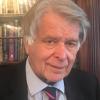Short bursts of exercise for strong bones
You can no longer use the excuse that you haven’t got time to keep fit, as a new study says just one minute of exercise a day is enough to prevent osteoporosis.
According to the study by the Universities of Exeter and Leicester, women who do 60-120 seconds of high-intensity weight-bearing exercise a day have four per cent better bone density than those who do less than a minute.
Consultant Rheumatologists Professor David Reid knows how important it is to protect bone health, and that it’s never too late to start exercising.
Prof Reid says, “Once someone knows they are at risk of osteoporosis, getting the right treatment can produce a reduction in risk of up to 70%, by using lifestyle changes as well as supplements and prescribed medication.”
The best exercise for bones
While simply walking around is enough impact to trigger your bones to produce new bone mass, and so increase density and strength. An increasing number of studies are saying that the most effective way to do this is by taking part in short bursts of activity rather than long workouts.
- Start with simply trying to walk more, and from there you can incorporate short bouts of running too.
- In the recent study, which involved 2,500 women, those who exercised for over two minutes had even stronger bones, with density six per cent higher than those who do under a minute.
“There’s a clear link between this kind of high-intensity, weight-bearing exercise and better bone health in women, said the study’s lead author Dr Victoria Stiles.
In another study, earlier this year, scientists from McMaster University found that 60 seconds of intense exercise broken up into 20 second blasts as part of a ten-minute workout can be as effective as a 45 minute endurance workout.
Are you at risk of osteoperosis?
As we get older, our body becomes less efficient at replacing bone mass, and so it’s important to take a closer look at the best exercise and lifestyle choices, nutrition and supplements.
- After the age of 30 we start to lose more bone mass than we make.
- This means we become more at risk of the bone-thinning disease osteoporosis, which can lead to a greater risk of deformities, brittle bones and fractures in later life.
- A loss of height as a person’s back becomes bent over, known as Dowager’s Hump. This is Kyphosis as a result of tiny spine or vertebral fractures.
- Women are more at risk than men as bone density declines significantly after the menopause.
- However, it’s a myth that men don’t suffer from bone-thinning, they do. And by the time we’re in our 60s men are just as likely as women to get osteoporosis.
How to protect your bones
When it comes to bone thinning, prevention is better than a cure. Many women discover they have osteoporosis when they suffer a fracture - but if you know your risk you can take medication and preventative action. You’ll need to have a DEXA scan to discover if your bones have thinned.
1. DEXA scans
DEXA scans are one of the most exciting breakthroughs for bone health and the diagnosis of osteoporosis, but they can be used for so much more. DEXA – also referred to as DXA – is short for dual energy X-ray absorptiometry. DEXA scans are safe, accurate, painless and non-invasive.
Lead DEXA expert, Professor David Reid says: “After the first vertebral fracture women (and probably men too), have a one in five chance of a second fracture within a year. Identifying people with, and at risk of, vertebral fractures is extremely important and it is now possible with the DEXA scanner.”
2 Bone Turnover Marker Tests
Ongoing bone balance can be assessed using Bone Turnover Markers (BTMs), which are biochemical laboratory tests performed on urine or blood samples. A combination of DEXA scanning and BTMs testing is very helpful for when deciding on an appropriate integrated treatment and for monitoring on-going efficacy of that treatment. Dr Caje Moniz, is a senior Clinical Biochemist, who manages the Biochemical Bone Marker services and laboratory testing, working closely with Prof Reid and his team.
3.Hormone Replacement Therapy (HRT)
Miss Tania Adib is a Consultant Gynaecologist, and one of her areas of expertise is in treating women going through the menopause. She provides a wide range of treatments for her patients including the use of mindfulness and non drug hormone replacement therapy (HRT). At The London PMS & Menopause Clinic a team of HRT specialists provide gynaecological services headed by Professor Studd.
The time of a woman’s life when her ovaries stop releasing an egg (ovum) on a monthly cycle, and her periods cease
Full medical glossary








